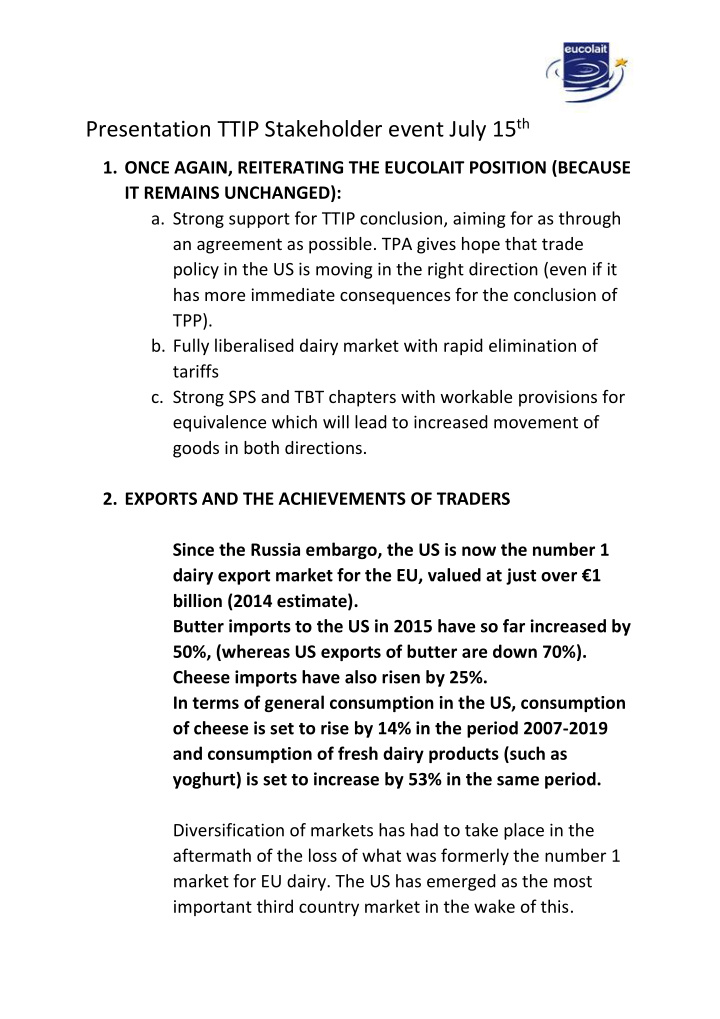



Presentation TTIP Stakeholder event July 15 th 1. ONCE AGAIN, REITERATING THE EUCOLAIT POSITION (BECAUSE IT REMAINS UNCHANGED): a. Strong support for TTIP conclusion, aiming for as through an agreement as possible. TPA gives hope that trade policy in the US is moving in the right direction (even if it has more immediate consequences for the conclusion of TPP). b. Fully liberalised dairy market with rapid elimination of tariffs c. Strong SPS and TBT chapters with workable provisions for equivalence which will lead to increased movement of goods in both directions. 2. EXPORTS AND THE ACHIEVEMENTS OF TRADERS Since the Russia embargo, the US is now the number 1 dairy export market for the EU, valued at just over € 1 billion (2014 estimate). Butter imports to the US in 2015 have so far increased by 50%, (whereas US exports of butter are down 70%). Cheese imports have also risen by 25%. In terms of general consumption in the US, consumption of cheese is set to rise by 14% in the period 2007-2019 and consumption of fresh dairy products (such as yoghurt) is set to increase by 53% in the same period. Diversification of markets has had to take place in the aftermath of the loss of what was formerly the number 1 market for EU dairy. The US has emerged as the most important third country market in the wake of this.
Any initiative by the Commission to support trade and to secure greater market access for EU dairy products needs to be fully supported in the current climate. The EU has proven that it is competitive globally without the need for trade distorting supports and there is no need for a defensive position. 3. PAVING THE WAY FOR EXPORTS FROM THE US TO THE EU i. Having a bigger supply pool is interesting, as it allows for increased efficiency in the market (two major dairy suppliers who are in a position to compete with one another) ii. Benefits for both sides, in the form of reciprocal balancing of trade – transatlantic filling of deficits and addressing surpluses, in particular for commodity products. Addressing price volatility issues. iii. Huge gaps between US and EU commodity prices on occasion – On/off trade expected between the EU and US 4. Non-tariff barriers need to be eliminated i. Regulatory equivalency is key to ensure that existing and future market barriers are lifted. ii. The Food Safety Modernisation Act and the Grade A Pasteurised Milk Ordinance and two examples of existing US legislation impacting on the movement of dairy (FSMA has not yet been fully implemented
and therefore the effect of this cannot be fully assessed). iii. It is vitally important that for the purposes of mutual recognition, the US counterparts recognise the EU as a single block with universal standards and not as 28 separate Member States. 5. CONCLUSIONS As stated, every effort must be made to support trade in the current challenging market environment. Benefits of a fully liberalised EU-US dairy market will be gradual but if the deal is concluded correctly the gains will be significant and they should not be jeopardized by regulatory hurdles.
Recommend
More recommend